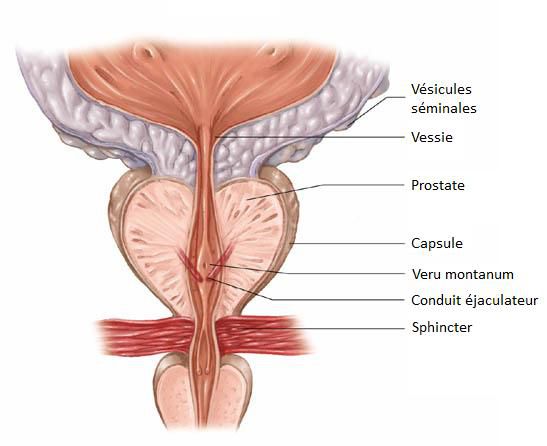-
 Wire drawing
Wire drawing
-
 Shiga toxin
Shiga toxin
-
 Cephalic
Cephalic
-
 Nintendo Revolution
Nintendo Revolution
-
 Permafrost
Permafrost
-
 Telluric pollution
Telluric pollution
-
 Hub
Hub
-
 Pyrites
Pyrites
-
 Infusion
Infusion
-
 Leprosy
Leprosy
-
 Bit map screen.
Bit map screen.
-
 MON810
MON810
-
 CP symmetry violation
CP symmetry violation
-
 Ecosystem
Ecosystem
-
 Batrachians
Batrachians
-
 Pervasive environment
Pervasive environment
-
 Pentose
Pentose
-
 Binary diagram
Binary diagram
-
 Pascal
Pascal
-
 EPDM
EPDM
-
 Norite
Norite
-
 Carbene
Carbene
-
 New Worlds Observer
New Worlds Observer
-
 Diabetic sulphonamides
Diabetic sulphonamides
-
 Cherry
Cherry
-
 Steganography
Steganography
-
 Thermocline
Thermocline
-
 Heteroatom
Heteroatom
-
 Capsid
Capsid
-
 Angiosperm
Angiosperm
Prostate
The prostate is part of the male reproductive system.
Function of the prostate
The prostate contributes to production of semen by secreting prostatic fluid. Prostatic fluid (which makes up 20% of the volume of semen) is colourless, isotonic, and contains calcium, proteins, zinc, citric acid, and acid phosphatase. Zinc plays a fundamental role in the ability of the spermatozoa to fertilise, and is extracted from the circulating blood by the prostate.
The prostate contracts during ejaculation and retracts during micturition.
Structure of the prostate
The prostate is an organ located immediately beneath the bladder. It is a fibromuscular glandular organ which is shaped like a chestnut and has a woody consistency. The prostate increases in size at puberty due to androgenic hormones and in adulthood measures approximately 2 by 3 centimetres, and weighs approximately 20 grams.
Passing through the prostate are the ejaculatory ducts and the urethra. It is therefore an organ which is a true crossroads between the urinary and genital tract.
The prostate is divided into several zones, the most important of which are the transition zones (where benign prostatic hyperplasia develops) and the peripheral zone (where cancer develops).
 The prostate contributes to production of semen by secreting prostatic fluid. DR Credits
The prostate contributes to production of semen by secreting prostatic fluid. DR Credits
Latest
Fill out my online form.



